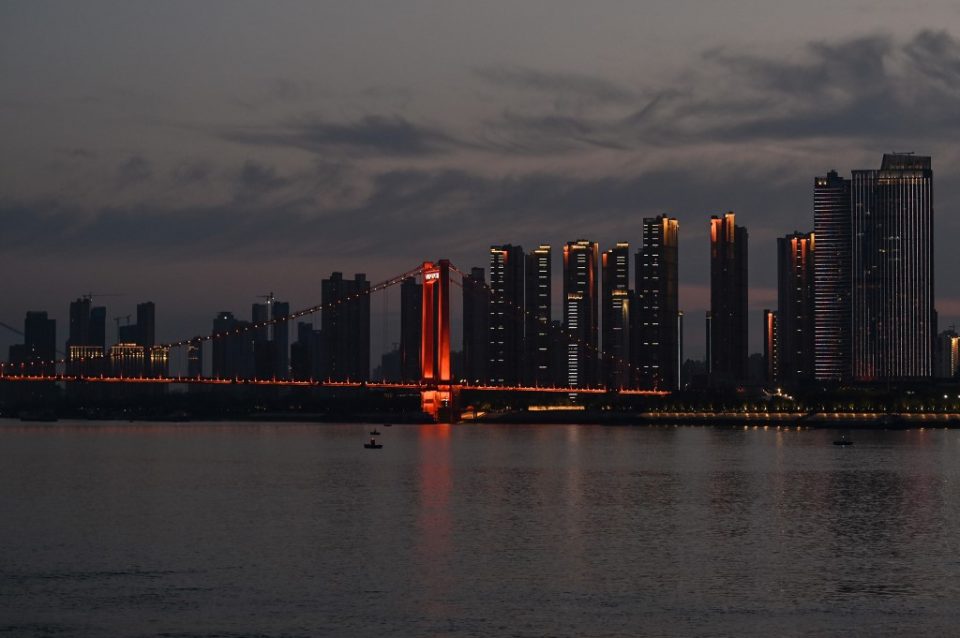
by Beiyi SEOW
Agence France Presse
BEIJING, China (AFP) — China’s economy contracted for the first time in around three decades in the first quarter as the coronavirus crisis brought the country to a standstill, according to an AFP poll of economists.
The world’s second-largest economy tanked in the first three months of the year as factories closed, consumers were compelled to stay home and the virus spread to other countries.
Analysts from 14 institutions expect China’s economy to have shrunk 8.2 percent from a year ago in the first quarter — the first contraction since quarterly data started to be reported in the early 1990s.
They also forecast that full-year gross domestic product (GDP) growth will come in at 1.7 percent, a dramatic drop from the 6.1 percent expansion logged last year and well below the pre-coronavirus prediction.
If the forecast is accurate, it would represent the worst annual growth since 1976, the year Communist Party Chairman Mao Zedong died.
The International Monetary Fund on Tuesday gave an even more dire estimate of 1.2 percent growth in 2020.
While many businesses in China have resumed work, the coronavirus pandemic has brought other economies to their knees around the world with many key trading partners under lockdown.
The IMF said the pandemic will cut world output by three percent this year.
Economists differed on the impact of the coronavirus on China’s economy, with first-quarter contraction estimates ranging from 4.6 percent to 15 percent.
– Larger fall than expected –
China’s downturn is “more disappointing than anyone expected”, said Moody’s Analytics economist Xu Xiaochun.
He also noted that China’s workforce returned to work slower than anticipated, pointing to a significant contraction in the first quarter.
While labour supply will not be an issue in April and greater fiscal and monetary support for the economy is expected, “it will not be enough to overcome the heavy drag from suppressed world demand for the remainder of the year”, he added.
The slow return to work also bodes badly for jobs, and the unemployment rate has already risen from last December.
Economists at ANZ Research noted in a recent report that double-digit contractions in economic indicators for the first two months had not been followed by a strong bounce-back in March.
Labour flows were also not back to pre-virus levels, especially in major production bases, they said.
“This is despite the central government’s efforts in encouraging workers to return to the cities where they work, such as the relaxation of travel restrictions,” they added.
– Difficult recovery –
Although the virus situation in China has largely improved, JP Morgan chief China economist Zhu Haibin said: “External risks will likely restrain the expected second-quarter recovery in China’s export-related manufacturing activity.”
Lockdowns in other countries could disrupt global supply chains, while fears over imported cases will probably cause a slower return to normal life, delaying the recovery of China’s service consumption and domestic demand, Zhu added.
Raphie Hayat, senior economist at Rabobank, added that the short-term impact of COVID-19 is expected to be “greater than the Great Financial Crisis of 2008/2009”, with the fallout hurting China’s growth.
HSBC chief China economist Qu Hongbin warned that the shock to external demand should not be seen as a mere trade contraction.
“US-China trade tensions last year showed us that an external demand shock can rapidly lead to a material deterioration in domestic demand growth,” he said.
The hit to supply chains is “deeper and more sprawling” this time, he added.
“As we are now forecasting a contraction or very weak growth in almost all Asian countries this year, the impact of the headwinds this year for China could be much deeper and more broad-based compared with last year.”
© Agence France-Presse







